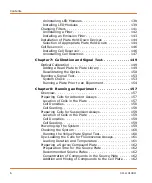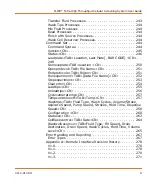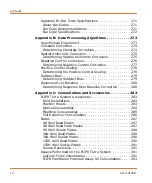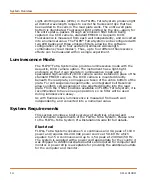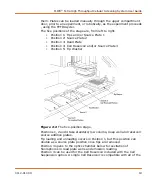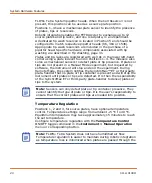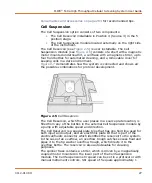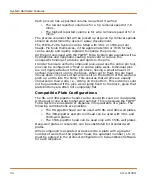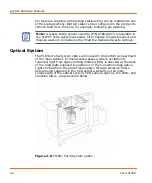
System Hardware Features
20
0112-0109 H
FLIPR
®
Tetra System pipettor heads. When the Cell Reservoir is not
present, this position can be used as a source plate position.
Positions 1–4 have a mechanical plate sensor to identify the presence
of plates, tips or reservoirs.
Robotic integration enables the TETRAcycler to exchange up to 12
source plates and tip racks, and one read plate, in an experiment.
A dedicated tip wash reservoir is located in Position 5 and should be
configured to match respective pipettor heads (96, 384 or 1536).
Appropriate tip wash reservoirs are included in the purchase of a
pipettor head. Specific hardware components associated with tip
washing are described in Tip Washing, page 31.
Plates and tip racks are registered with well A1 in the lower left-hand
corner using a plate indexer found in Positions 1–4. The indexers also
serve as mechanical sensors to detect plate or tip presence. If plates or
tips are not present in a Manual Mode experiment, but requested by
software, the instrument will stop and end the experiment. During
Remote Mode, the system notifies the SynchroMax
™
ET or third-party
plate-handler that no plate or tip container is present and will stop the
instrument until plates or tips are detected. It is then the responsibility
of the SynchroMax ET or third-party plate-handler to deliver plates or
tips to the system.
Temperature Regulation
Positions 1, 2 and 4, for source plates, have optional temperature
control. Temperature settings range from a5 °C to 40 °C.
Equilibrium temperature may take approximately 15 minutes to reach
the set temperature.
Configure temperature regulation with the
Temperature Control
ON/OFF toggle command in the
Instrument > Manual Operation
menu or corresponding button.
Note:
Sensors can only detect plate or tip container presence. They
cannot identify the type of plate or tips. It is the user’s responsibility to
ensure that the correct plates and tips are loaded into position.
Note:
FLIPR
®
Tetra System does not have humidified air flow.
Temperature regulation is easier to maintain during robotic integration
as temperature loss is minimized when plates are passed through the
Summary of Contents for FLIPR Tetra
Page 1: ...FLIPR Tetra High Throughput Cellular Screening System User Guide 0112 0109 H December 2011...
Page 12: ...Contents 12 0112 0109 H...
Page 16: ...System Overview 16 0112 0109 H...
Page 40: ...System Hardware Features 40 0112 0109 H...
Page 148: ...Exchanging Hardware 148 0112 0109 H...
Page 156: ...Calibration and Signal Test 156 0112 0109 H...
Page 196: ...Running an Experiment 196 0112 0109 H...
Page 232: ...Robotic Integration 232 0112 0109 H The following drawings illustrate these requirements...
Page 282: ...Data Processing Algorithms 282 0112 0109 H...
Page 294: ...Consumables and Accessories 294 0112 0109 H...
Page 298: ...Using AquaMax Sterilant 298 0112 0109 H...
Page 302: ...Electromagnetic Compatibility EMC 302 0112 0109 H...

